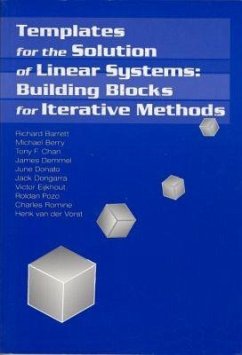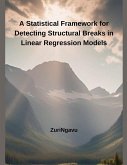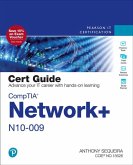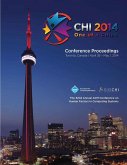Richard Barrett, Henk van der Vorst, Michael Berry, Tony F Chan, James Demmel, June Donato, Jack Dongarra, Victor Eijkhout, Roldan Pozo, Charles Romine
Templates for the Solution of Linear Systems
Building Blocks for Iterative Methods
Richard Barrett, Henk van der Vorst, Michael Berry, Tony F Chan, James Demmel, June Donato, Jack Dongarra, Victor Eijkhout, Roldan Pozo, Charles Romine
Templates for the Solution of Linear Systems
Building Blocks for Iterative Methods
- Broschiertes Buch
- Merkliste
- Auf die Merkliste
- Bewerten Bewerten
- Teilen
- Produkt teilen
- Produkterinnerung
- Produkterinnerung
Focuses on the use of iterative methods for solving large sparse systems of linear equations. Templates are introduced to meet the needs of both the traditional user and the high performance specialist. Templates, a description of a general algorithm rather than the executable object or source code more commonly found in a conventional software library, offer the degree of customization the user may desire.
Andere Kunden interessierten sich auch für
![A Key to the Secret Vault: A Solution of Man's Origin; the Philosophy of His Present Condition; and His Future Destiny A Key to the Secret Vault: A Solution of Man's Origin; the Philosophy of His Present Condition; and His Future Destiny]() Robert Wilson MurphyA Key to the Secret Vault: A Solution of Man's Origin; the Philosophy of His Present Condition; and His Future Destiny17,99 €
Robert Wilson MurphyA Key to the Secret Vault: A Solution of Man's Origin; the Philosophy of His Present Condition; and His Future Destiny17,99 €![Styles and Templates Styles and Templates]() Bruce ByfieldStyles and Templates18,99 €
Bruce ByfieldStyles and Templates18,99 €![A Statistical Framework for Detecting Structural Breaks in Linear Regression Models A Statistical Framework for Detecting Structural Breaks in Linear Regression Models]() ZuringavuA Statistical Framework for Detecting Structural Breaks in Linear Regression Models29,99 €
ZuringavuA Statistical Framework for Detecting Structural Breaks in Linear Regression Models29,99 €![Exam Ref DP-100 Designing and Implementing a Data Science Solution on Azure Exam Ref DP-100 Designing and Implementing a Data Science Solution on Azure]() Dayne SorvistoExam Ref DP-100 Designing and Implementing a Data Science Solution on Azure40,99 €
Dayne SorvistoExam Ref DP-100 Designing and Implementing a Data Science Solution on Azure40,99 €![The New ABCs of Research The New ABCs of Research]() Ben ShneidermanThe New ABCs of Research38,99 €
Ben ShneidermanThe New ABCs of Research38,99 €![CHI 14 Proceedings of the SIGCHI Conference on Human Factors in Computing Systems Vol 3B CHI 14 Proceedings of the SIGCHI Conference on Human Factors in Computing Systems Vol 3B]() Chi 14 Conference CommitteeCHI 14 Proceedings of the SIGCHI Conference on Human Factors in Computing Systems Vol 3B128,99 €
Chi 14 Conference CommitteeCHI 14 Proceedings of the SIGCHI Conference on Human Factors in Computing Systems Vol 3B128,99 €![AAMAS 14 Vol 1 Proceedings of the 13th International Conference on Automous Agents and Multiagent Systems AAMAS 14 Vol 1 Proceedings of the 13th International Conference on Automous Agents and Multiagent Systems]() Aamas 14 Conference CommitteeAAMAS 14 Vol 1 Proceedings of the 13th International Conference on Automous Agents and Multiagent Systems231,99 €
Aamas 14 Conference CommitteeAAMAS 14 Vol 1 Proceedings of the 13th International Conference on Automous Agents and Multiagent Systems231,99 €-
-
-
Focuses on the use of iterative methods for solving large sparse systems of linear equations. Templates are introduced to meet the needs of both the traditional user and the high performance specialist. Templates, a description of a general algorithm rather than the executable object or source code more commonly found in a conventional software library, offer the degree of customization the user may desire.
Produktdetails
- Produktdetails
- Verlag: Society for Industrial and Applied Mathematics (SIAM)
- Seitenzahl: 142
- Erscheinungstermin: 1. Januar 1987
- Englisch
- Abmessung: 256mm x 181mm x 8mm
- Gewicht: 268g
- ISBN-13: 9780898713282
- ISBN-10: 0898713285
- Artikelnr.: 22146612
- Herstellerkennzeichnung
- Libri GmbH
- Europaallee 1
- 36244 Bad Hersfeld
- gpsr@libri.de
- Verlag: Society for Industrial and Applied Mathematics (SIAM)
- Seitenzahl: 142
- Erscheinungstermin: 1. Januar 1987
- Englisch
- Abmessung: 256mm x 181mm x 8mm
- Gewicht: 268g
- ISBN-13: 9780898713282
- ISBN-10: 0898713285
- Artikelnr.: 22146612
- Herstellerkennzeichnung
- Libri GmbH
- Europaallee 1
- 36244 Bad Hersfeld
- gpsr@libri.de
1. List of Symbols
2. List of Figures
3. Chapter 1: Introduction
4. Why Use Templates?
5. What Methods Are Covered?
6. Chapter 2: Iterative Methods
7. Overview of the Methods
8. Stationary Iterative Methods
9. The Jacobi Method
10. The Gauss-Seidel Method
11. The Successive Overrelaxation Method
12. The Symmetric Successive Overrelaxation Method
13. Notes and References
14. Nonstationary Iterative Methods
15. Conjugate Gradient Method (CG)
16. MINRES and SYMMLQ
17. CG on the Normal Equations, CGNE and CGNR
18. Generalized Minimal Residual (GMRES)
19. BiConjugate Gradient (BiCG)
20. Quasi-Minimal Residual (QMR)
21. Conjugate Gradient Squared Method (CGS)
22. BiConjugate Gradient Squared Method (Bi-CGSTAB)
23. Chebyshev Iteration
24. Computational Aspects of the Methods
25. A Short History of Krylov Methods
26. Survey of Recent Krylov Methods
27. Chapter 3: Preconditioners
28. The Why and How
29. Cost Trade-off
30. Left and right preconditioning
31. Jacobi Preconditioning
32. Block Jacobi Methods
33. Discussion
34. SSOR Preconditioning
35. Incomplete Factorization Preconditioners
36. Creating an Incomplete Factorization
37. Point Incomplete Factorizations
38. Block Factorization Methods
39. Incomplete LQ Factorization
40. Polynomial Preconditioners
41. Other Preconditioners
42. Preconditioning by the Symmetric Part
43. The Use of Fast Solvers
44. Alternating Direction Implicit Methods
45. Chapter 4: Related Issues
46. Complex Systems
47. Stopping Criteria
48. More Details about Stopping Criteria
49. When __ or ____ is not Readily Available
50. Estimating ____
51. Stopping When Progress is no Longer Being Made
52. Accounting for Floating Point Errors
53. Data Structures
54. Survey of Sparse Matrix Storage Formats
55. Matrix Vector Products
56. Sparse Incomplete Factorizations
57. Parallelism
58. Inner Products
59. Vector Updates
60. Matrix-vector Products
61. Preconditioning
62. Wavefronts in the Gauss-Seidel and Conjugate Gradient Methods
63. Blocked Operations in the GMRES Method
64. Chapter 5: Remaining Topics
65. The Lanczos Connection
66. Block and n - step Iterative Methods
67. Reduced System Preconditioning
68. Domain Decomposition Methods
69. Overlapping Subdomain Methods
70. Non-overlapping Subdomain Methods
71. Further Remarks
72. Multigrid Methods
73. Row Projection Methods
74. Appendix A: Obtaining the Software
75. Appendix B: Overview of the Blas
76. Appendix C: Glossary.
2. List of Figures
3. Chapter 1: Introduction
4. Why Use Templates?
5. What Methods Are Covered?
6. Chapter 2: Iterative Methods
7. Overview of the Methods
8. Stationary Iterative Methods
9. The Jacobi Method
10. The Gauss-Seidel Method
11. The Successive Overrelaxation Method
12. The Symmetric Successive Overrelaxation Method
13. Notes and References
14. Nonstationary Iterative Methods
15. Conjugate Gradient Method (CG)
16. MINRES and SYMMLQ
17. CG on the Normal Equations, CGNE and CGNR
18. Generalized Minimal Residual (GMRES)
19. BiConjugate Gradient (BiCG)
20. Quasi-Minimal Residual (QMR)
21. Conjugate Gradient Squared Method (CGS)
22. BiConjugate Gradient Squared Method (Bi-CGSTAB)
23. Chebyshev Iteration
24. Computational Aspects of the Methods
25. A Short History of Krylov Methods
26. Survey of Recent Krylov Methods
27. Chapter 3: Preconditioners
28. The Why and How
29. Cost Trade-off
30. Left and right preconditioning
31. Jacobi Preconditioning
32. Block Jacobi Methods
33. Discussion
34. SSOR Preconditioning
35. Incomplete Factorization Preconditioners
36. Creating an Incomplete Factorization
37. Point Incomplete Factorizations
38. Block Factorization Methods
39. Incomplete LQ Factorization
40. Polynomial Preconditioners
41. Other Preconditioners
42. Preconditioning by the Symmetric Part
43. The Use of Fast Solvers
44. Alternating Direction Implicit Methods
45. Chapter 4: Related Issues
46. Complex Systems
47. Stopping Criteria
48. More Details about Stopping Criteria
49. When __ or ____ is not Readily Available
50. Estimating ____
51. Stopping When Progress is no Longer Being Made
52. Accounting for Floating Point Errors
53. Data Structures
54. Survey of Sparse Matrix Storage Formats
55. Matrix Vector Products
56. Sparse Incomplete Factorizations
57. Parallelism
58. Inner Products
59. Vector Updates
60. Matrix-vector Products
61. Preconditioning
62. Wavefronts in the Gauss-Seidel and Conjugate Gradient Methods
63. Blocked Operations in the GMRES Method
64. Chapter 5: Remaining Topics
65. The Lanczos Connection
66. Block and n - step Iterative Methods
67. Reduced System Preconditioning
68. Domain Decomposition Methods
69. Overlapping Subdomain Methods
70. Non-overlapping Subdomain Methods
71. Further Remarks
72. Multigrid Methods
73. Row Projection Methods
74. Appendix A: Obtaining the Software
75. Appendix B: Overview of the Blas
76. Appendix C: Glossary.
1. List of Symbols
2. List of Figures
3. Chapter 1: Introduction
4. Why Use Templates?
5. What Methods Are Covered?
6. Chapter 2: Iterative Methods
7. Overview of the Methods
8. Stationary Iterative Methods
9. The Jacobi Method
10. The Gauss-Seidel Method
11. The Successive Overrelaxation Method
12. The Symmetric Successive Overrelaxation Method
13. Notes and References
14. Nonstationary Iterative Methods
15. Conjugate Gradient Method (CG)
16. MINRES and SYMMLQ
17. CG on the Normal Equations, CGNE and CGNR
18. Generalized Minimal Residual (GMRES)
19. BiConjugate Gradient (BiCG)
20. Quasi-Minimal Residual (QMR)
21. Conjugate Gradient Squared Method (CGS)
22. BiConjugate Gradient Squared Method (Bi-CGSTAB)
23. Chebyshev Iteration
24. Computational Aspects of the Methods
25. A Short History of Krylov Methods
26. Survey of Recent Krylov Methods
27. Chapter 3: Preconditioners
28. The Why and How
29. Cost Trade-off
30. Left and right preconditioning
31. Jacobi Preconditioning
32. Block Jacobi Methods
33. Discussion
34. SSOR Preconditioning
35. Incomplete Factorization Preconditioners
36. Creating an Incomplete Factorization
37. Point Incomplete Factorizations
38. Block Factorization Methods
39. Incomplete LQ Factorization
40. Polynomial Preconditioners
41. Other Preconditioners
42. Preconditioning by the Symmetric Part
43. The Use of Fast Solvers
44. Alternating Direction Implicit Methods
45. Chapter 4: Related Issues
46. Complex Systems
47. Stopping Criteria
48. More Details about Stopping Criteria
49. When __ or ____ is not Readily Available
50. Estimating ____
51. Stopping When Progress is no Longer Being Made
52. Accounting for Floating Point Errors
53. Data Structures
54. Survey of Sparse Matrix Storage Formats
55. Matrix Vector Products
56. Sparse Incomplete Factorizations
57. Parallelism
58. Inner Products
59. Vector Updates
60. Matrix-vector Products
61. Preconditioning
62. Wavefronts in the Gauss-Seidel and Conjugate Gradient Methods
63. Blocked Operations in the GMRES Method
64. Chapter 5: Remaining Topics
65. The Lanczos Connection
66. Block and n - step Iterative Methods
67. Reduced System Preconditioning
68. Domain Decomposition Methods
69. Overlapping Subdomain Methods
70. Non-overlapping Subdomain Methods
71. Further Remarks
72. Multigrid Methods
73. Row Projection Methods
74. Appendix A: Obtaining the Software
75. Appendix B: Overview of the Blas
76. Appendix C: Glossary.
2. List of Figures
3. Chapter 1: Introduction
4. Why Use Templates?
5. What Methods Are Covered?
6. Chapter 2: Iterative Methods
7. Overview of the Methods
8. Stationary Iterative Methods
9. The Jacobi Method
10. The Gauss-Seidel Method
11. The Successive Overrelaxation Method
12. The Symmetric Successive Overrelaxation Method
13. Notes and References
14. Nonstationary Iterative Methods
15. Conjugate Gradient Method (CG)
16. MINRES and SYMMLQ
17. CG on the Normal Equations, CGNE and CGNR
18. Generalized Minimal Residual (GMRES)
19. BiConjugate Gradient (BiCG)
20. Quasi-Minimal Residual (QMR)
21. Conjugate Gradient Squared Method (CGS)
22. BiConjugate Gradient Squared Method (Bi-CGSTAB)
23. Chebyshev Iteration
24. Computational Aspects of the Methods
25. A Short History of Krylov Methods
26. Survey of Recent Krylov Methods
27. Chapter 3: Preconditioners
28. The Why and How
29. Cost Trade-off
30. Left and right preconditioning
31. Jacobi Preconditioning
32. Block Jacobi Methods
33. Discussion
34. SSOR Preconditioning
35. Incomplete Factorization Preconditioners
36. Creating an Incomplete Factorization
37. Point Incomplete Factorizations
38. Block Factorization Methods
39. Incomplete LQ Factorization
40. Polynomial Preconditioners
41. Other Preconditioners
42. Preconditioning by the Symmetric Part
43. The Use of Fast Solvers
44. Alternating Direction Implicit Methods
45. Chapter 4: Related Issues
46. Complex Systems
47. Stopping Criteria
48. More Details about Stopping Criteria
49. When __ or ____ is not Readily Available
50. Estimating ____
51. Stopping When Progress is no Longer Being Made
52. Accounting for Floating Point Errors
53. Data Structures
54. Survey of Sparse Matrix Storage Formats
55. Matrix Vector Products
56. Sparse Incomplete Factorizations
57. Parallelism
58. Inner Products
59. Vector Updates
60. Matrix-vector Products
61. Preconditioning
62. Wavefronts in the Gauss-Seidel and Conjugate Gradient Methods
63. Blocked Operations in the GMRES Method
64. Chapter 5: Remaining Topics
65. The Lanczos Connection
66. Block and n - step Iterative Methods
67. Reduced System Preconditioning
68. Domain Decomposition Methods
69. Overlapping Subdomain Methods
70. Non-overlapping Subdomain Methods
71. Further Remarks
72. Multigrid Methods
73. Row Projection Methods
74. Appendix A: Obtaining the Software
75. Appendix B: Overview of the Blas
76. Appendix C: Glossary.








